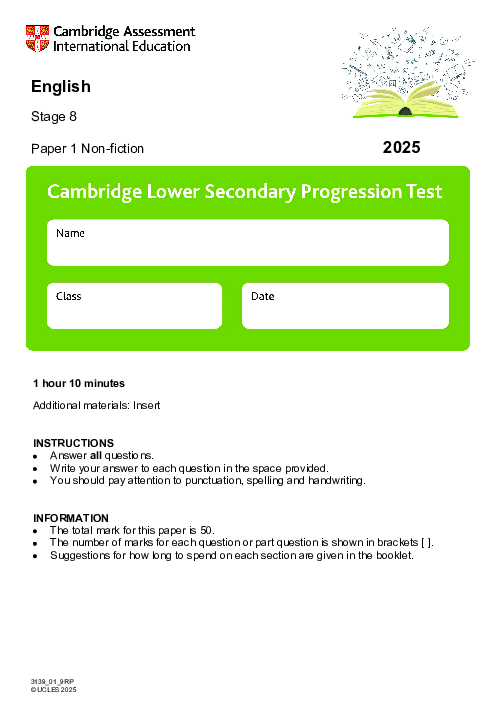1. Reading comprehension: idiomatic expression interpretation (“brick wall“), adjective identification, quotation support for emotional reaction and character traits (e.g. confidence, restraint)
2. Text analysis: similes in descriptive writing, punctuation use (colon, brackets, dashes, quotation marks), sequencing emotional progression (e.g. rejection, reassurance, acceptance, release)
3. Language understanding: word meaning in context (e.g. “actor“ synonym, emotional intensity phrases), correct multiple-choice inference (e.g. practising mime), matching punctuation to function
4. Structure and theme: progression of writer’s feelings across workshop experience, function of paragraph transitions, building narrative tone
5. Writing task: discursive essay on non-verbal communication (emojis, gestures, visual icons, multilingual barriers), planning and organizing ideas clearly, grammar and spelling accuracy
6. Style and purpose: informative and reflective tone, relevance to real-world communication (digital and analog), personal connection and examples encouraged for effectiveness
omer uner
Classification: Paper 1
Page count: 8
Viewed: 49
Last update: 16 days ago
Crash report


